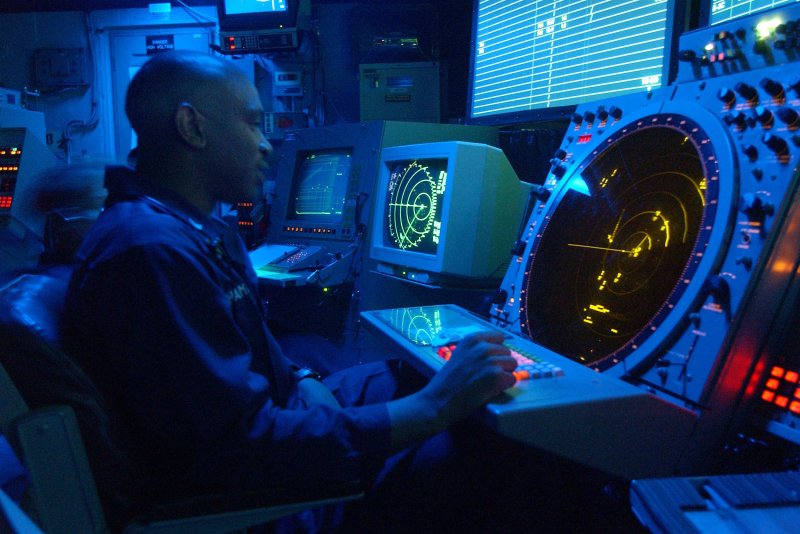
British military leadership said over the weekend that they are interested in hosting one of three giant radar systems designed by the U.S. Space Force to help detect threats in space. File Photo by Eric A. Clement/U.S. Navy/UPI | License Photo
July 19 (UPI) -- A U.S. Space Force plan to position a system in Britain to monitor spacecraft up to 22,400 miles from earth drew the approval of the Royal Air Force chief.
Air Chief Marshal Sir Michael Wigston, in the United States to examine the plans, said Britain is "very interested" in hosting an element of the Deep Space Advanced Radar Capability, under development by the Space and Missile Systems Center of the U.S. Space Force.
The project, known as DARC, would double the range of detection of objects in space, with an array of 10 to 15 parabolic antennas, or large satellite dishes, covering about 0.4 square miles.
Each dish would be about 50 feet in diameter, with additional DARC locations in Texas and Australia.
RELATED Maj. Gen. Michael Guetlein nominated to lead USSF Space Systems Command
It was announced in May that the USSF will seek a request for proposals to develop prototypes of deep space radar sensors that can monitor satellites and space debris in geostationary orbits.
Sensors would "detect and track targets which could potentially be threats to our high-value assets," USSF Lt. Col. Jack Walker told the BBC.
"It could be from the Chinese, it could be from the Russians, it could be anti-satellite or it could be debris in space," Walker said.
Current early warning systems can only detect objects in space up to 12,400 miles from earth. Walker noted that the proposed system could detect an object the size of a football up to 22,400 miles away.
Over 1,000 satellites were launched into space in 2020, many by China, and there is concern that Chinese anti-satellite armaments could threaten U.S. assets in space.
"We see activity by countries like China and Russia which is a cause for concern," Wigston said in a radio interview in Britain.
COLD WAR IN SPACE
RELATED USAF's Red Flag 21-1 exercise involves space, cyberspace elements
"It is reckless activity, deploying and testing of systems that look like weapons in space, so any system like the radar we are talking about which gives us a better picture of what is going on is incredibly important to us," Wigston said.
The Chinese government responded to the plans on Sunday with concern.
"The U.S. has been developing its space situational awareness for a long time," an editorial comment in Global Times, a publication of the Chinese Communist Party, said in part.
The editorial suggests that China and Russia need to "expose" what it sees as a U.S. effort "hyping the so-called space threat" from the two countries.
"China and Russia must strongly oppose the U.S. efforts to extend the military competition among major powers into space, and oppose its attempts to construct DARC with its allies," the commentary said.

No comments:
Post a Comment